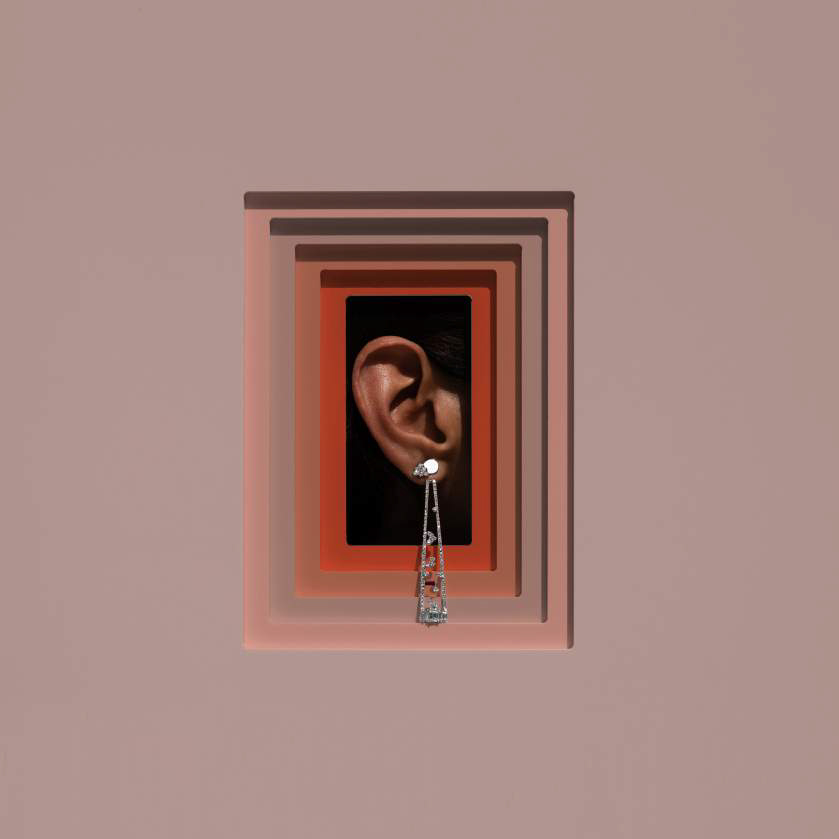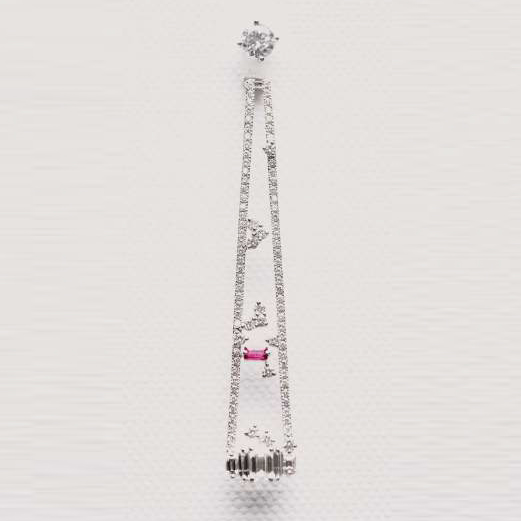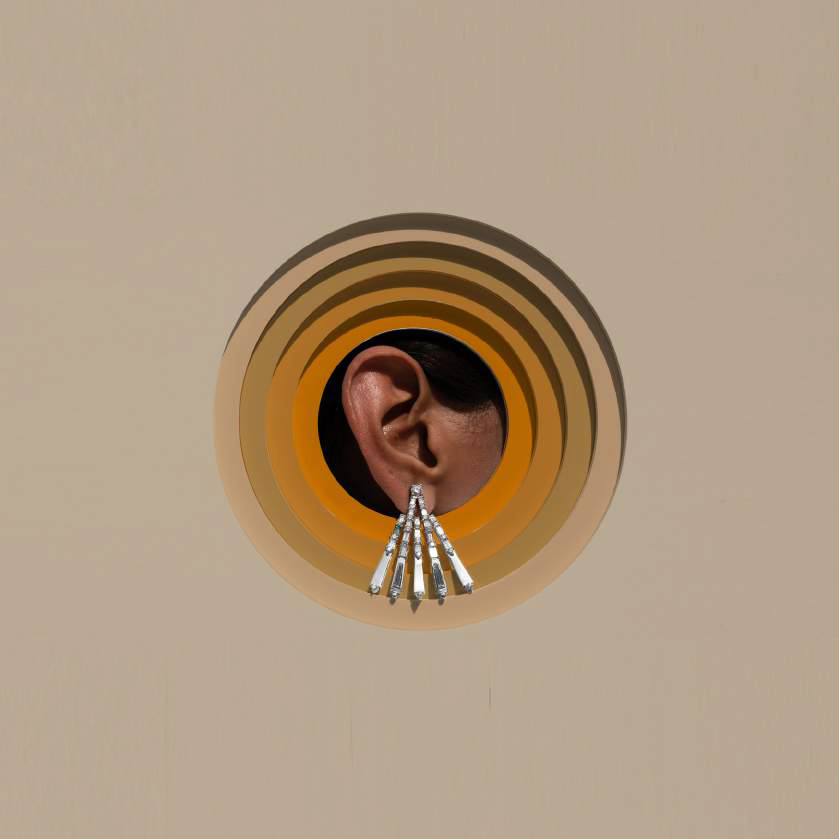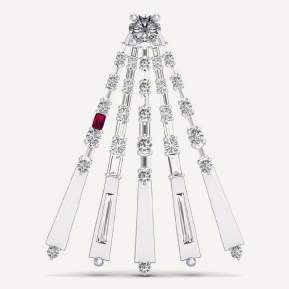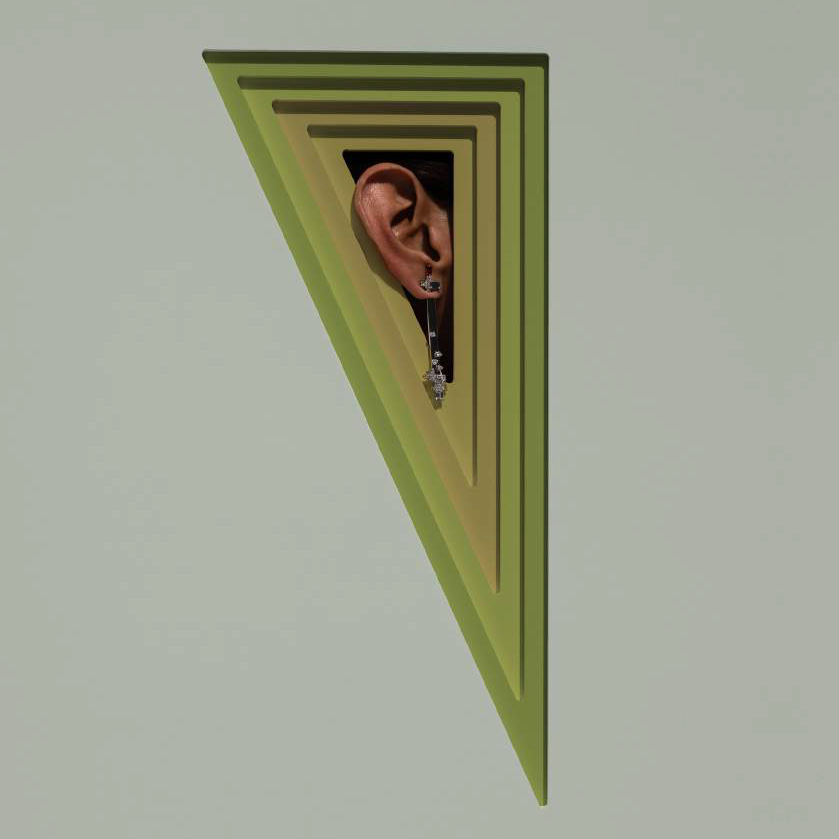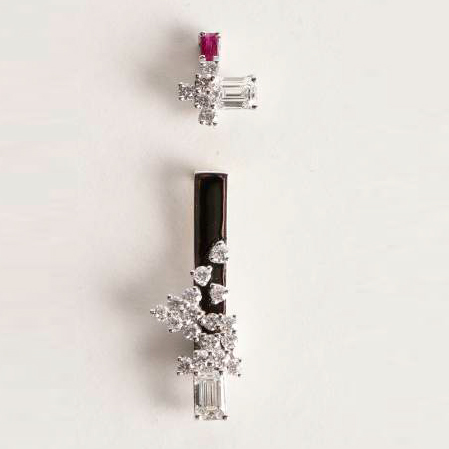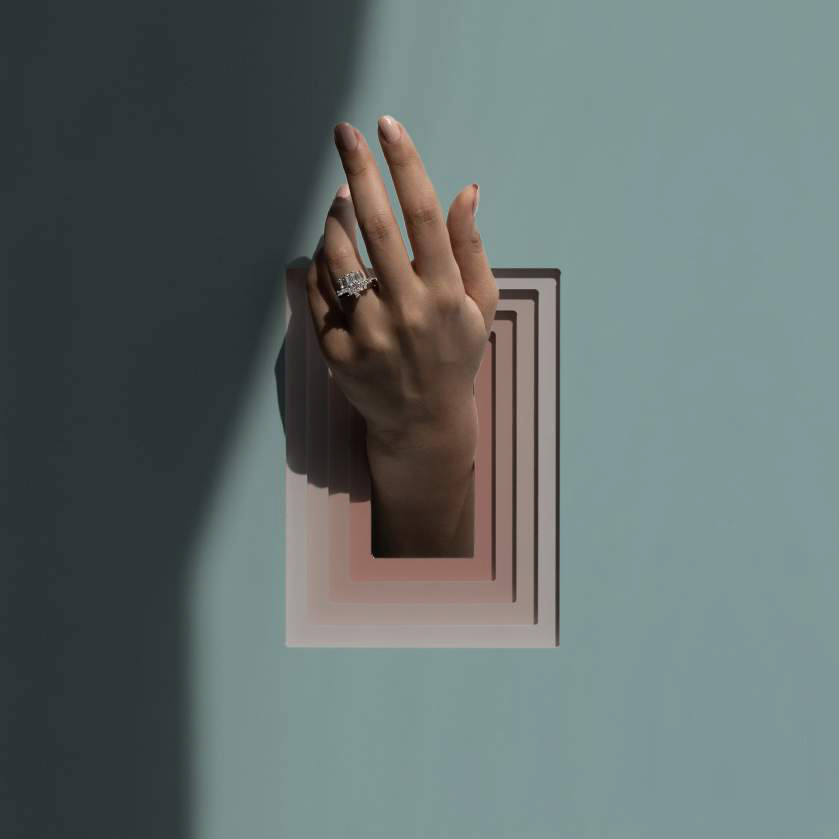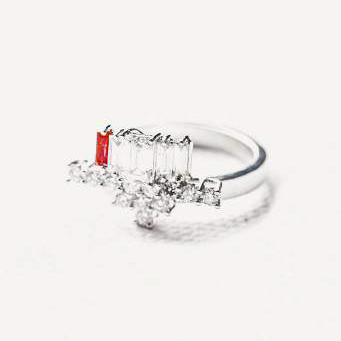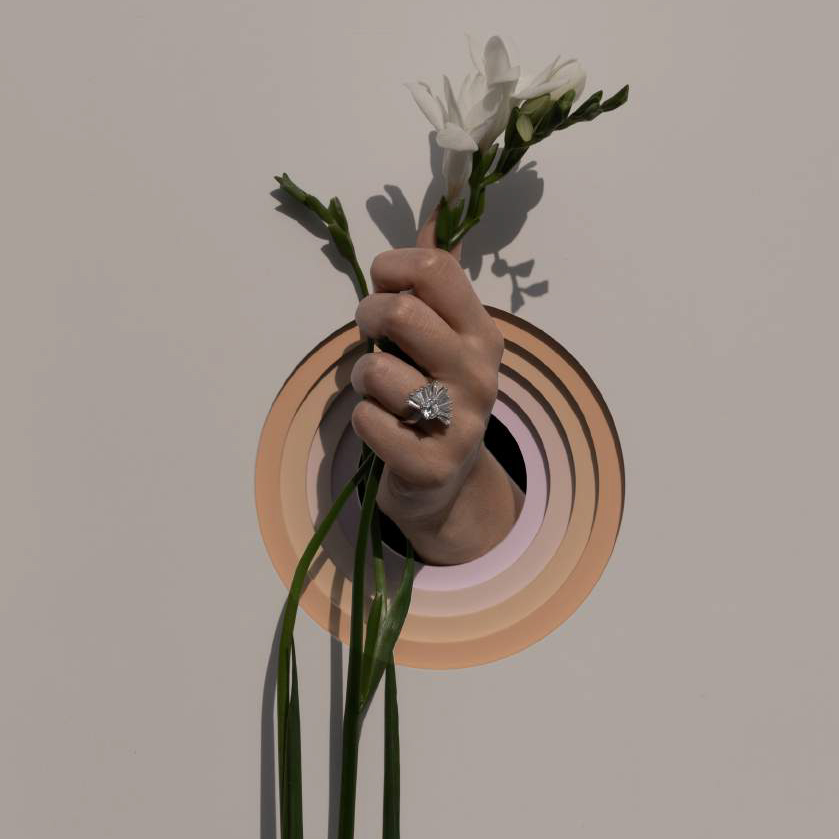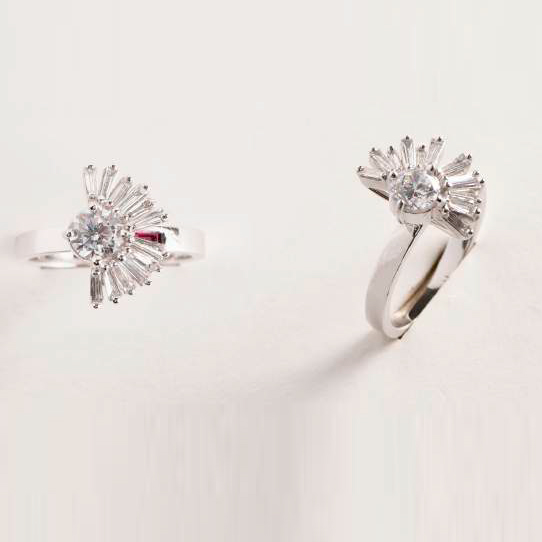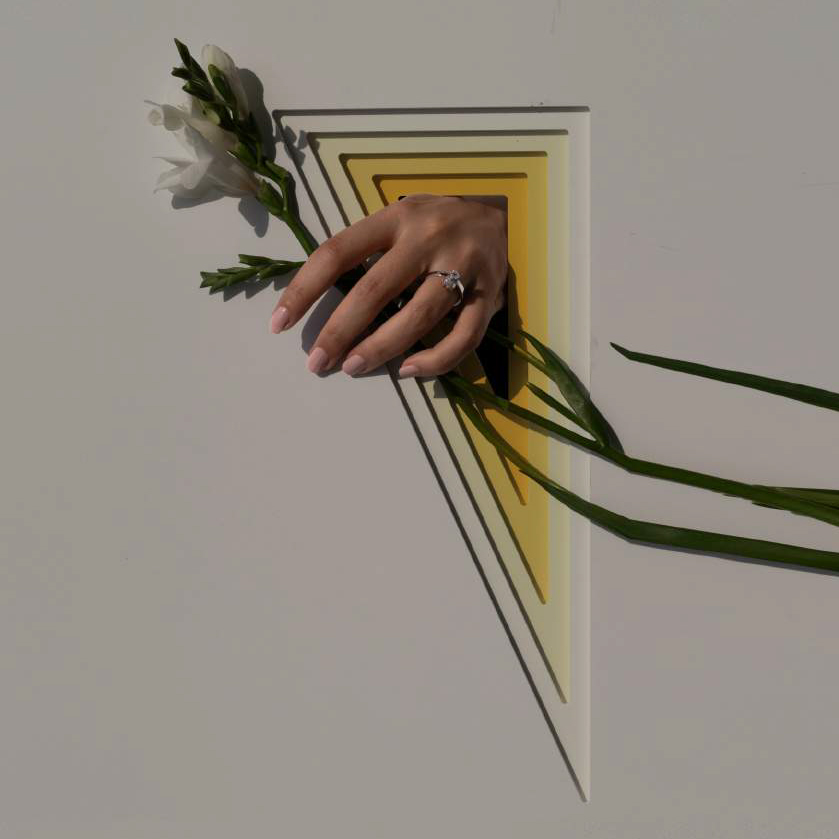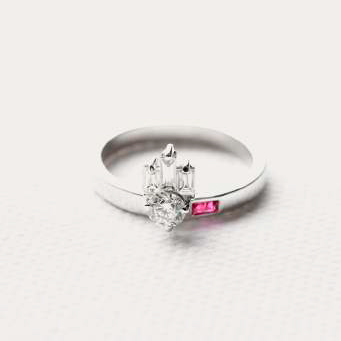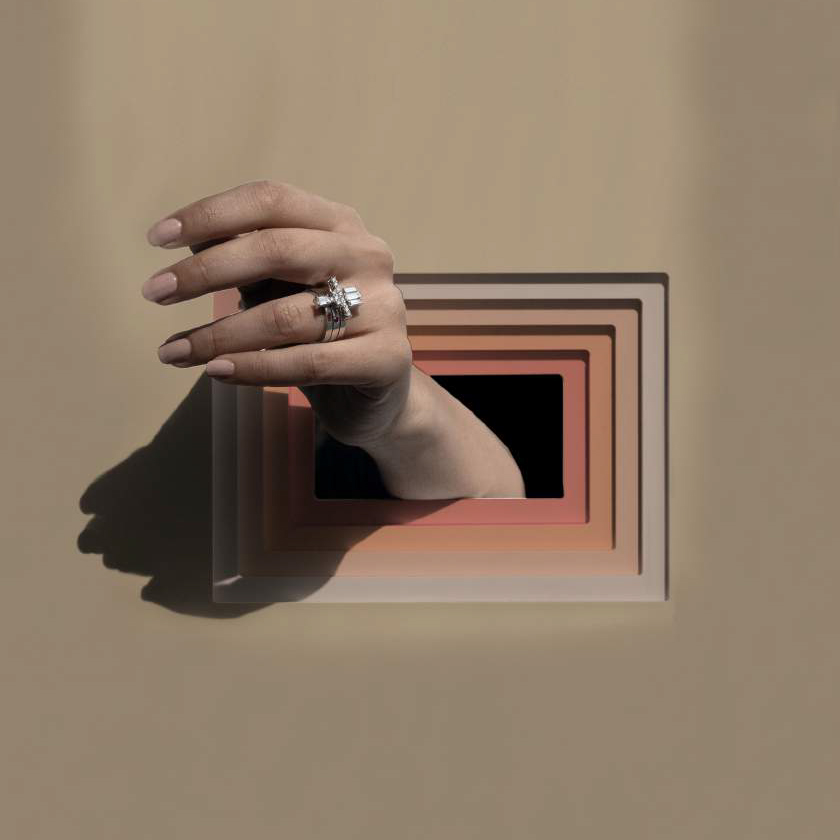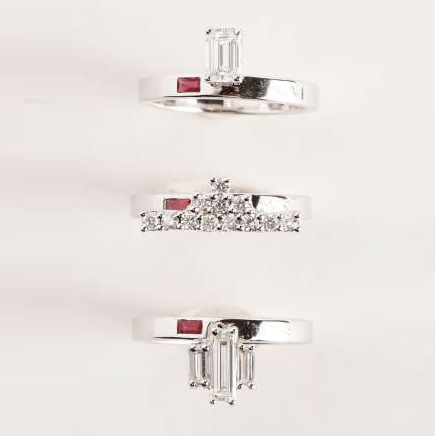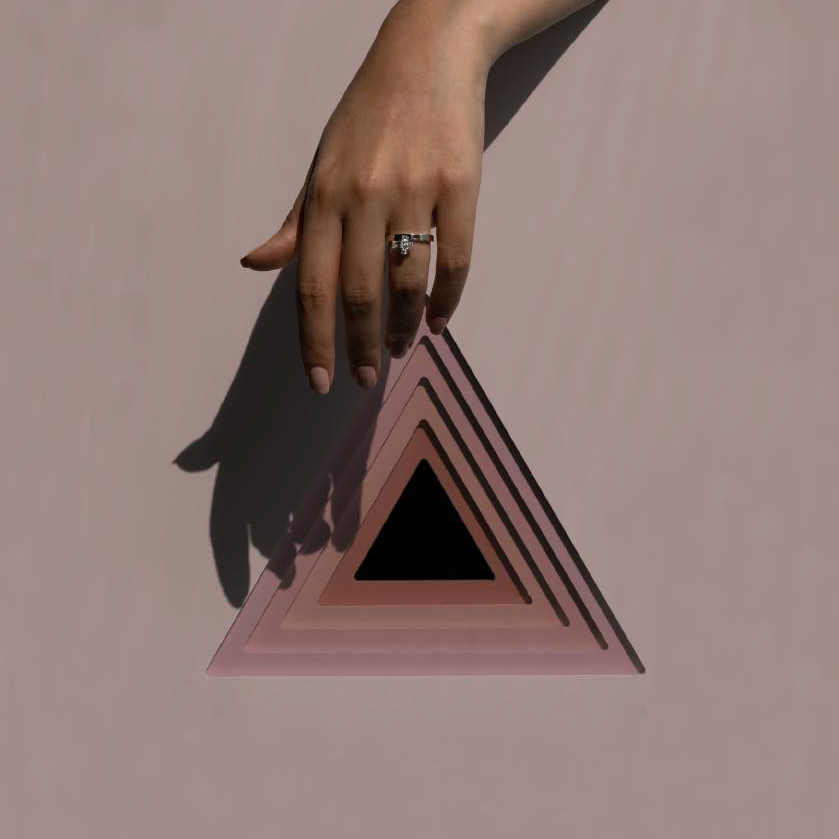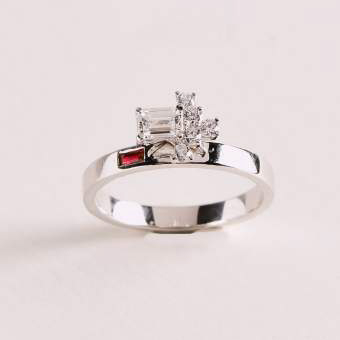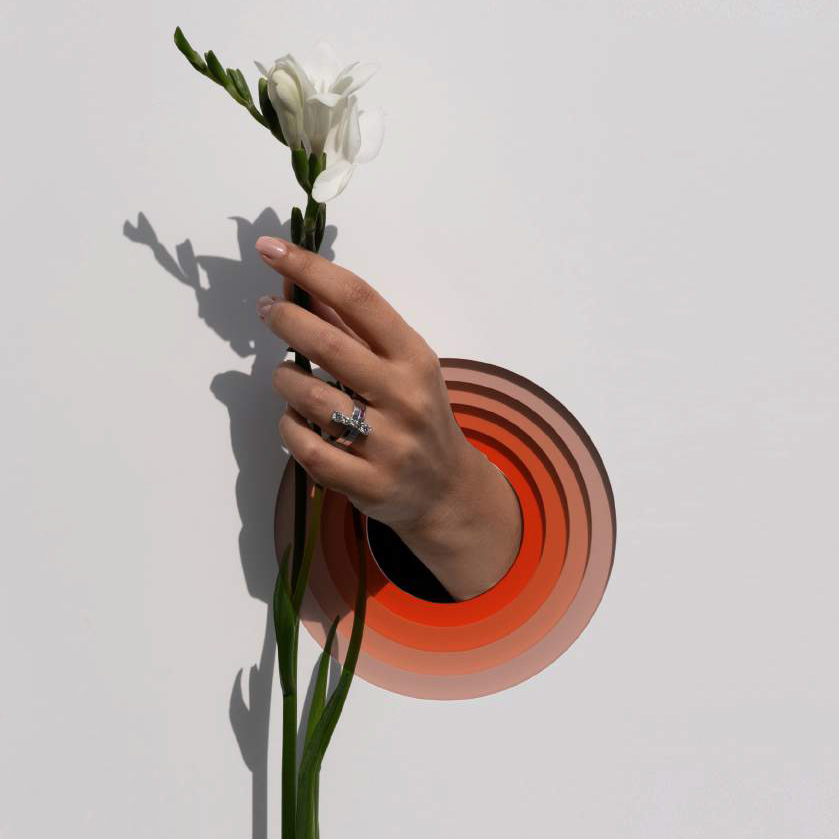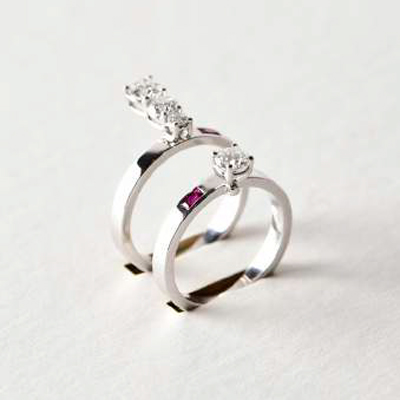Inspired by the architecture of the Arab world, every jewelry piece fashions a contemporary version of a traditional form. OŪMÄEM focuses on regionalist designs that aims to produce ethically sourced and locally made adorned pieces reflective of new identity. The design process takes abstract vernacular objects developed into new designs that follows constructed regulating lines in order to produce asymmetrical yet balanced designs with a recognized identity.
With architecture at the core of each design, mathematics, geometry, and scientific processes became the tools that makes the jewelry.
OŪMÄEM is a brand that celebrates diversity, unity, and inclusion in the form of a new unique tradition
We initially conceived the pieces as a contemporary play on indigenous forms.
Taking the idea one step further, we crafted each design by using a coordinate system as a template to construct and break specific grids for each piece. The focus of each design begins with a single diamond shifted off-center. A single baguette-cut ruby is always included to tip the balance of the design. The ruby baguettes also act as guide on how to wear the pieces and to further emphasize the concept of decentralization and alternative standards of beauty.
The ruby is not a depiction of a brand; rather, it is used as a representation of the native elements and the keystone of the entire design.
The SADUHAUS earring represents the triumph of the native ornamentation of the indigenous Arab world, which managed to survive to this day. In this earring, the main diamond is surrounded by 4 side stones with a number of brilliant-cut diamonds arranged to form repeated triangles. The shapes used and their repetition is commonly found in Sadu weaving, Bedouin textile used in the making of tents .
STORMSAIL is an earring inspired by the sails of old Arab Dhow also known as Boom. There are usually several sails on these ships, each with a different function. This inspired the form and function of the earring. Besides having 5 arms, the earring splits into two earrings, one for each side.
MAP earring was created by arranging several smaller diamonds in the form of triangles that act as guideposts that lead the viewer’s eye to the main solitaire diamond. Triangulations are commonly used in cartography that was greatly developed during the Islamic Golden Age to determine a location, for this reason this earring reflects the concept of a map and the determined location of the person who wears it
The main inspiration behind the SADUHAUS ring is to reflect both the Sadu ornaments and its modern development of the elaborate architecture found in the Middle East and specifically the Gulf Arab Countries. Here the main diamond is surrounded by 4 side-stones and 12 brilliant cut diamonds arranged to form a triangle- both the shapes and their repetition is commonly found in Sadu weaving and patterns usually used in the making of Bedouin tents
The AR-RAY ring is a modern play on the classic ballerina ring. The ring instead became a tribute to traditional dance popular in the Arabian Peninsula, called Samri . 12 tapered baguettes became a representation of the steps taken in this dance, which is usually perceived to be elegant yet expressive moves beyond its subtle gestures.
PETITE KASBAH is inspired by native citadel found in the Arab world; they are also known as Kasbah. The central diamond represents the core of the city while the three baguette diamonds reflect the towers surrounding and protecting a city.
SHIFT ring depends on shifting the central position of the main diamond in a classical
solitaire ring to create an asymmetrical jewelry piece to represent independence.
MARGIN ring belongs to a group of rings created to allow the stacking of more than two rings. The design is simple: a number of brilliant-cut diamonds arranged to form a straight line – an edge.
INDEX ring is the only piece that used a baguette cut as the main stone. The overall diamond composition comprises three baguettes. The central baguette is longer and points inward, toward the person’s inner power.
MAP ring was created by arranging several smaller diamonds in the form of triangles that act as guideposts that lead the viewer’s eye to the main solitaire diamond. Triangulations are commonly used in cartography that was greatly developed during the Islamic Golden Age to determine a location, for this reason this earring reflects the concept of a map and the determined location of the person who wears it.
ECHO ring has this three-diamonds ring is a modern twist on the classic solitaire ring with two side diamonds. Yet here, the main stone is complemented by the addition of smaller stones that create a powerful linear composition. The brilliance casts an endless ripple effect.
SHIFT ring depends on shifting the central position of the main diamond in a classical solitaire ring to create an asymmetrical jewelry piece to represent independence.
Anas Alomaim is an architect, jewelry designer, and a professor of architecture. Alomaim developed a passion for jewelry design during a critical moment in his career. After the death of his father, Alomaim stepped into a new phase of his life. He awakened anew to the relationships that connect him to the women in his family. Alomaim designed and manufactured solitaire rings for his mother and sisters as a gesture of gratitude for their support during this precarious time. It was then that he realized his passion for diamonds, jewelry design, and their multifaceted beauty. Alomaim believes that the art of design encompasses everything from a simple spoon to a city.
After finishing his Masters of Architecture and Urban Design at Columbia University, he moved to California to pursue his PhD at the University of California Los Angeles. He worked on analyzing the geometries of structures that respect the larger laws of nature, constellation, and planets: namely, how mathematical equations translate physically on a Cartesian coordinate system into creating monumental objects. Alomaim participated and cocurated several exhibitions in Kuwait, Dubai, New York City, and Los Angeles. He also worked for academic institutions, corporate design firms, independent architectural offices, and interned with fashion designers, including Diane von Furstenberg.


